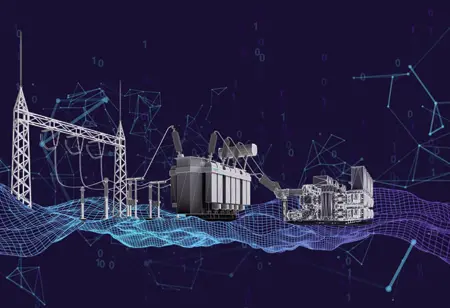Thank you for Subscribing to Electrical Business Review Weekly Brief
I agree We use cookies on this website to enhance your user experience. By clicking any link on this page you are giving your consent for us to set cookies. More info
Greening the Giants: Electric Motors Revolutionising Manufacturing and Construction
A paradigm shift is underway as electric motors penetrate the heart of heavy industries, namely manufacturing and construction, bringing forth a wave of transformation that spans productivity enhancement.

By
Electrical Business Review | Tuesday, September 19, 2023
Stay ahead of the industry with exclusive feature stories on the top companies, expert insights and the latest news delivered straight to your inbox. Subscribe today.
Electric motors are revolutionizing heavy industries like manufacturing and construction, driving productivity, reducing emissions, and improving operational safety.
FREMONT, CA: A paradigm shift is underway as electric motors penetrate the heart of heavy industries, namely manufacturing and construction, bringing forth a wave of transformation that spans productivity enhancement, emissions reduction, and heightened operational safety.Manufacturing, often characterised by energy-intensive processes, is witnessing a remarkable makeover with the advent of electric motors. These motors, designed for optimal efficiency, swiftly replace their conventional counterparts in various production lines. The result? Drastic reductions in energy consumption and operational costs. As the manufacturing sector embraces electric motors, it augments its profitability and significantly curtails its environmental impact. The inherently cleaner operation of electric motors translates to a tangible decrease in greenhouse gas emissions, bolstering the industry's sustainability profile.
On the construction front, electric motors are rewriting the narrative of heavy machinery. Notorious for its noise pollution and exhaust emissions, traditional construction equipment is undergoing a quiet but powerful transformation. Electric-powered construction machinery offers a unique blend of raw power and efficiency, while emitting no tailpipe pollutants. This convergence is pivotal in addressing air quality concerns in urban areas where construction activities often intersect with densely populated regions.
Yet, the advantages don't halt at efficiency and emission reductions. Electric motors also hold the potential to elevate operational safety in both sectors. These motors generate minimal heat and vibrations compared to traditional combustion engines, mitigating the risk of accidents and injuries. In the high-stakes world of construction and manufacturing, safer operational environments are both a moral imperative and a strategic one.
While the promise is palpable, challenges persist. One substantial hurdle is the initial investment to transition from conventional equipment to electric alternatives. However, this financial barrier is expected to diminish as technology matures and economies of scale come into play.
Furthermore, the establishment of a robust charging infrastructure is paramount. Both manufacturing and construction industries require reliable and accessible charging solutions to keep electric machinery running smoothly. The development of charging networks will play a pivotal role in expediting the adoption of electric motors in these sectors.
In the grand narrative of sustainable industrial evolution, electric motors serve as protagonists, rewriting the norms of manufacturing and construction. With every electric motor integrated into heavy machinery, industries inch closer to their goals of increased efficiency, decreased emissions, and heightened safety standards. As the journey unfolds, it's clear that these electric motors are not just assets; they are the driving force behind a greener and safer industrial future.








